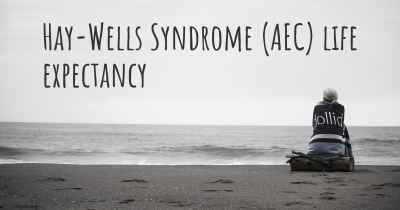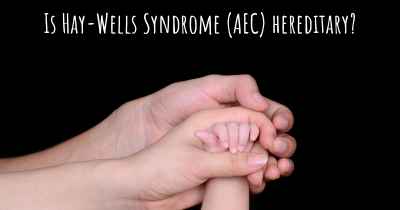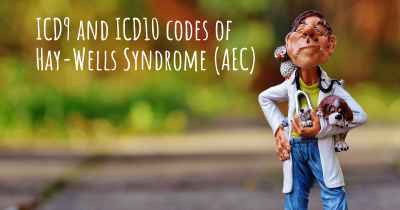Which are the symptoms of Hay-Wells Syndrome (AEC)?
See the worst symptoms of affected by Hay-Wells Syndrome (AEC) here

Hay-Wells syndrome, also known as Ankyloblepharon-Ectodermal Defects-Cleft Lip/Palate (AEC) syndrome, is a rare genetic disorder that affects multiple systems in the body. It is characterized by a combination of distinctive facial features, skin abnormalities, and various other developmental abnormalities. The severity and specific symptoms can vary widely among affected individuals.
One of the hallmark features of Hay-Wells syndrome is the presence of ankyloblepharon, which refers to the fusion of the eyelids. This can lead to partial or complete closure of the eyes, causing significant visual impairment. Ankyloblepharon typically manifests as thin strands of tissue connecting the upper and lower eyelids, resulting in a characteristic "stuck together" appearance. In some cases, ankyloblepharon may require surgical intervention to improve vision and prevent complications.
Individuals with Hay-Wells syndrome often exhibit ectodermal defects, which affect structures derived from the ectoderm (the outermost layer of embryonic tissue). These defects can include sparse or absent hair (hypotrichosis or alopecia), abnormal or missing teeth (hypodontia or anodontia), and underdeveloped sweat glands. The absence of sweat glands can lead to difficulties regulating body temperature, making affected individuals more prone to overheating.
Cleft lip and/or palate are common features of Hay-Wells syndrome. Cleft lip refers to a split or opening in the upper lip, while cleft palate refers to a split or opening in the roof of the mouth. These orofacial clefts can cause feeding difficulties, speech impairments, and may require surgical repair to improve function and appearance.
The syndrome can also affect the development of the skin, resulting in various skin abnormalities. These may include skin erosions, blistering, or peeling, particularly in areas of friction or pressure. Additionally, individuals with Hay-Wells syndrome may have dry, scaly skin (ichthyosis) or abnormal pigmentation.
Other less common symptoms associated with Hay-Wells syndrome may involve the skeletal system, such as fusion of certain bones in the fingers or toes (syndactyly), webbing of the skin between the fingers or toes (cutaneous syndactyly), or abnormalities of the nails. Some individuals may also experience hearing loss, developmental delays, intellectual disability, or heart defects.
Hay-Wells syndrome is caused by mutations in the TP63 gene, which plays a crucial role in embryonic development and the formation of various tissues. It follows an autosomal dominant pattern of inheritance, meaning that an affected individual has a 50% chance of passing the condition on to each of their children.
Due to the wide range of symptoms and their varying severity, management of Hay-Wells syndrome typically involves a multidisciplinary approach. This may include regular monitoring of vision and hearing, early intervention for speech and developmental delays, dental care, and addressing any specific medical concerns on an individual basis.








